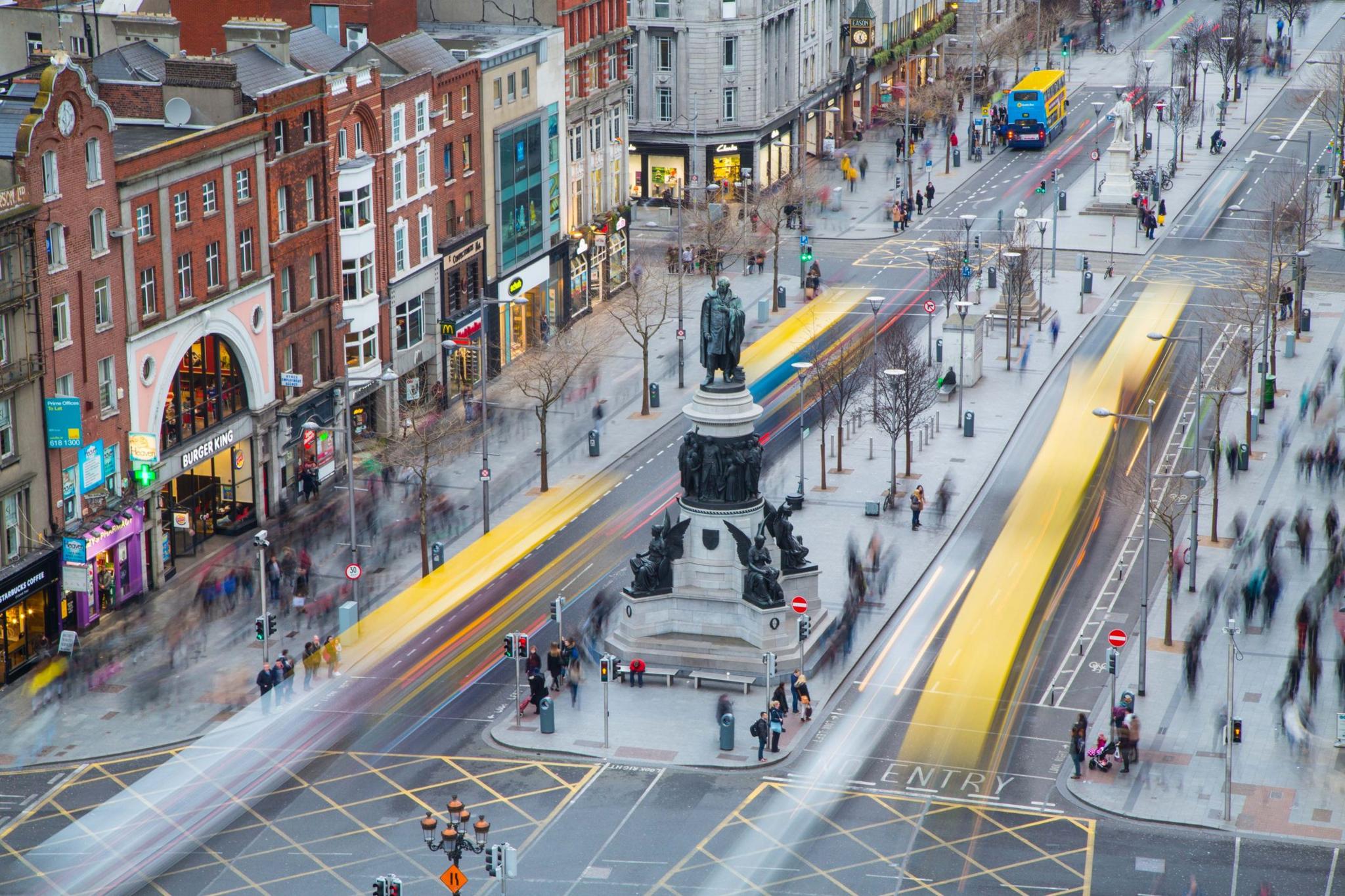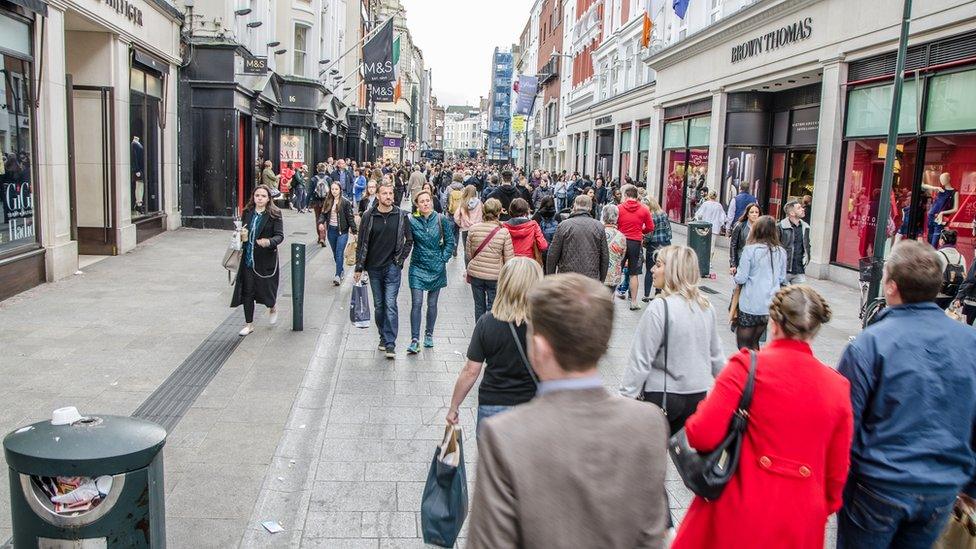Irish population grows by 98,000 in a year

More than 1.5m people now live in Dublin
At a glance
The Republic of Ireland's population has grown by the largest amount in any year since 2008
Immigration is at its highest level since 2007
The rise is mostly down to net migration
More than 28% of the population now lives in Dublin
- Published
The Republic of Ireland's population grew by almost 98,000 people in the past year, the biggest increase since 2008.
Official figures suggested the population in April 2023 was 5,281,600, up from 5,184,000 in 2022.
Most of the growth - 77,600 people - came from net migration with the rest due to 20,000 more births than deaths.
Immigration was at its highest level since 2007, which mainly reflects the impact of Russia invading Ukraine.
Cathal Doherty, a statistician in population estimates at the Central Statistics Office, said the number of people immigrating to Ireland in the year to April 2023 was was estimated to be 141,600, while the number of emigrants over the same period was estimated at 64,000.
As a result net migration was 77,600 - up from 51,700 the previous year.
Of those 141,600 immigrants, almost 42,000 were from Ukraine.
The others were 29,600 returning Irish citizens, 26,100 other EU citizens, 4,800 UK citizens, and about 39,000 from the rest of the world.
Just over 14% of the population - 757,000 people - were non-Irish citizens.
The figures suggest the population of Dublin is now 1,501,500 people, surpassing 1.5m for the first time.
The proportion of the population living in Dublin has risen from 27.6% of the total in 2011 to 28.4% of the total in 2023
Related topics
- Published31 August 2023

- Published23 June 2022
